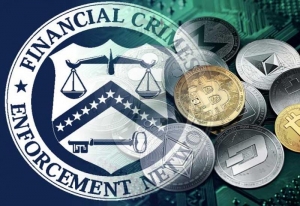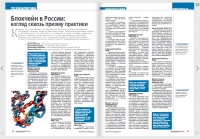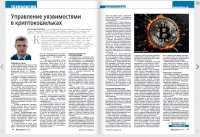Блог
Displaying items by tag: Guidance
GUIDANCE FOR A RISK-BASED APPROACH TO VIRTUAL ASSETS AND VIRTUAL ASSET SERVICE PROVIDERS
Orlando, FL, United States – 21 June 2019. Financial innovation has drastically changed the financial landscape. New technologies, services and products offer efficient alternatives to classic financial products and can improve financial inclusion. At the same time, the speed and anonymity of some of these innovative products can attract criminals and terrorist who wish to use them to launder the proceeds of their crimes and finance their illicit activities.
This guidance will help countries and virtual asset service providers understand their anti-money laundering and counter-terrorist financing obligations, and effectively implement the FATF’s requirements as they apply to this sector.
This guidance follows revisions to the FATF Recommendations in October 2018 and June 2019 in response to the increasing use of virtual assets for money laundering and terrorist financing. The FATF strengthened its standards to clarify the application of anti-money laundering and counter- terrorist financing requirements on virtual assets and virtual asset service providers. Countries are now required to assess and mitigate their risks associated with virtual asset financial activities and providers; license or register providers and subject them to supervision or monitoring by competent national authorities. Virtual asset service providers are subject to the same relevant FATF measures that apply to financial institutions.
The guidance addresses the following:
- How do virtual assets activities and virtual asset service providers fall within the scope of the FATF Recommendations? (Section II)
- How should countries and competent authorities apply the FATF Recommendations in the context of virtual assets or virtual asset service providers? (Section III)
- How do the FATF Recommendations apply to virtual asset service providers, and other entities (including banks, securities broker-dealers) that engage in or provide virtual asset covered activities?
The guidance, which benefited from dialogue with the private sector, also includes examples of national approaches to regulating and supervising virtual asset activities and virtual asset service providers to prevent their misuse for money laundering and terrorist financing.
Source: Financial Action Task Force (FATF).
APPLICATION OF FINCEN’S REGULATIONS TO CERTAIN BUSINESS MODELS INVOLVING CONVERTIBLE VIRTUAL CURRENCIES
On May 9, 2019, FinCEN released guidelines for applying the rules to some of the Business Models for Attracting Convertible Virtual Currencies. To remind individuals under the Banking Secrets Act (BSA) about how FinCEN rules relating to companies providing monetary services (MSBs) apply to certain business models related to the transfer of money denominated in value, which replaces currency, in particular, convertible virtual currencies (CVCs).
This guidance does not establish any new regulatory expectations or requirements. Rather, it consolidates current FinCEN regulations, and related administrative rulings and guidance issued since 2011, and then applies these rules and interpretations to other common business models involving CVC engaging in the same underlying patterns of activity.
This guidance is intended to help financial institutions comply with their existing obligations under the BSA as they relate to current and emerging business models involving CVC by describing FinCEN’s existing regulatory approach to the issues most frequently raised by industry, law enforcement, and other regulatory bodies within this evolving financial environment. In this regard, it covers only certain business models and necessarily does not address every potential combination of facts and circumstances. Thus, a person working with a business model not specifically included in this guidance may still have BSA obligations.
The overall structure of this guidance is as follows:
Section 1 defines certain key concepts within the context of the guidance. Although the titles or names assigned to these key concepts may coincide with terms customarily used by industry and share similar attributes, for purposes of the guidance their meaning is limited to the definition provided in the guidance.
Section 2 consolidates and explains current FinCEN regulations, previous administrative rulings, and guidance involving the regulation of money transmission under the BSA. By consolidating and summarizing rules and interpretation in a single Section, this guidance provides a resource to help financial institutions comply with their existing obligations under the BSA as they relate to current and emerging activities involving CVC.
Section 3 summarizes the development and content of FinCEN’s 2013 guidance on the application of money transmission regulations to transactions denominated in CVC.
Sections 4 and 5 describe FinCEN’s existing regulatory approach to current and emerging business models using patterns of activity involving CVC. This approach illustrates how FinCEN fits existing interpretations about certain activities to other activities that at first may seem unrelated, but conform to the same combination of key facts and circumstances.
Finally, Section 6 contains a list of resources to which interested parties may refer for further explanation about the content of the guidance, or to assist in evaluating facts and circumstances not expressly covered in this guidance.
Source: United States Department of the Treasury Financial Crimes Enforcement Network | FinCEN.gov
Search
Blog Category
Popular Post
Latest News
О КОСАтка
Корпоративная система аналитики Транзакция Криптовалюта Актив - кибербезопасность инфраструктуры блокчейнов и антифрод в криптовалютной сфере (антискам, прозрачность, комплаенс).
Связаться
Российская Федерация, Москва
Тел.: +7 (911) 999 9868
Факс:
Почта: cosatca@ueba.su
Сайт: www.ueba.su





